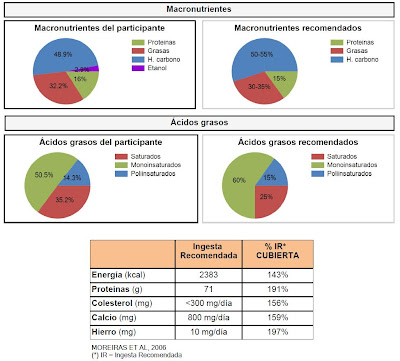There wasn't anything especially worrying - not that I would post it here on my blog anyway! - but, as is always the case when you lift up the hood and start poking around in the engine, some little things that need checking usually pop up. This is why reports like this usually go in a sealed envelope to your doctor because what can seem like a life threatening condition from the description often turns out to be nothing more than a back-covering bit of medical legalese.
What is also typical is that a whole list of measurements are given - blood pressure, cholesterol levels, etc - along with a recommended range. The fact that my BMI (Body Mass Index) came out as 25.18 triggered an alert:
Your Body Mass Index is outside the normal recommended range by the World Health Organization. This indicates an excess of weight in relation to your height and can be due to an inadequate diet or a lack of physical activity. Please pay special attention to the corresponding sections of this report and in particular the dietary and exercise recommendations.
OK, it's true that I was about 5 kilos heavier when this study was done, just after my holidays in Vietnam, but - come on - there's no way that anyone would say that I was overweight. The BMI is a very limited way of detecting obesity and only really works when it is patently obviously the case. Muscle weighs more than fat which can mean that athletes appear to be overweight. For example, track cycling Olympic Gold Medallist Sir Chris Hoy would be an authentic chubby checker if one was to go by his BMI of 27.2. Given that some people can develop eating disorders by becoming too obsessed with what they eat, I think this kind of advice has to be delivered with a bit more care. In any case, a good pair of callipers gives a much more reliable indication of the fat content of a person...
In a similar vein, the idea that I am consuming 43% more calories on average than recommended is very dubious based on the way that this number of calories was estimated (by asking me to think of what I normally eat) and I find it highly unlikely that I consume an average of 3,407 calories a day! According to this calculator, my basal metabolic rate should be around 1,826 calories a day (with no exercise) and about 2,831 calories a day to support the level of physical activity I engage in.
Talking of activity, I was interested to see what the results of having worn that blasted accelerometer for a whole week would show.
To put this in context, this is what I did that week and the moderate and vigorous activity that was recorded as a result:
| Light (accelerometer) | Vigorous (accelerometer) | Light (perceived) | Vigorous (perceived) | ||
| Wednesday | 8x4" run @ 17 kph | 35 | 30 | 0 | 32 |
| Thursday | 90" mountain bike | 35 | 0 | 90 | 0 |
| Friday | 2x15" run @ 15.5-16.5 kph | 55 | 30 | 0 | 30 |
| Saturday | 90" run @ 13 kph | 50 | 80 | 45 | 45 |
| Sunday | 60" light mountain bike | 30 | 0 | 60 | 0 |
| Monday | 60" run @ 13 kph | 50 | 30 | 30 | 30 |
| Tuesday | 8x5" run @ 16.5-17 kph | 70 | 40 | 0 | 40 |
I don't want to rubbish the report because I think it is a very worthwhile initiative and the information contained in it is very useful but I do think that it is important to deliver the messages with all the relevant disclaimers. Knowing what I do about my body fat, my activity levels and my calorie intake versus consumption, I realize how approximate the recommendations are. Unfortunately, this makes it much harder for me to take seriously the other recommendations in the report regarding cholesterol and so on. The main purpose of the study, of course, is to collect data on a massive scale so these kind of approximations will hopefully get averaged out. It does show just how difficult it is to objectively measure aspects of the human body and compile related statistics even in this day and age.




No comments:
Post a Comment